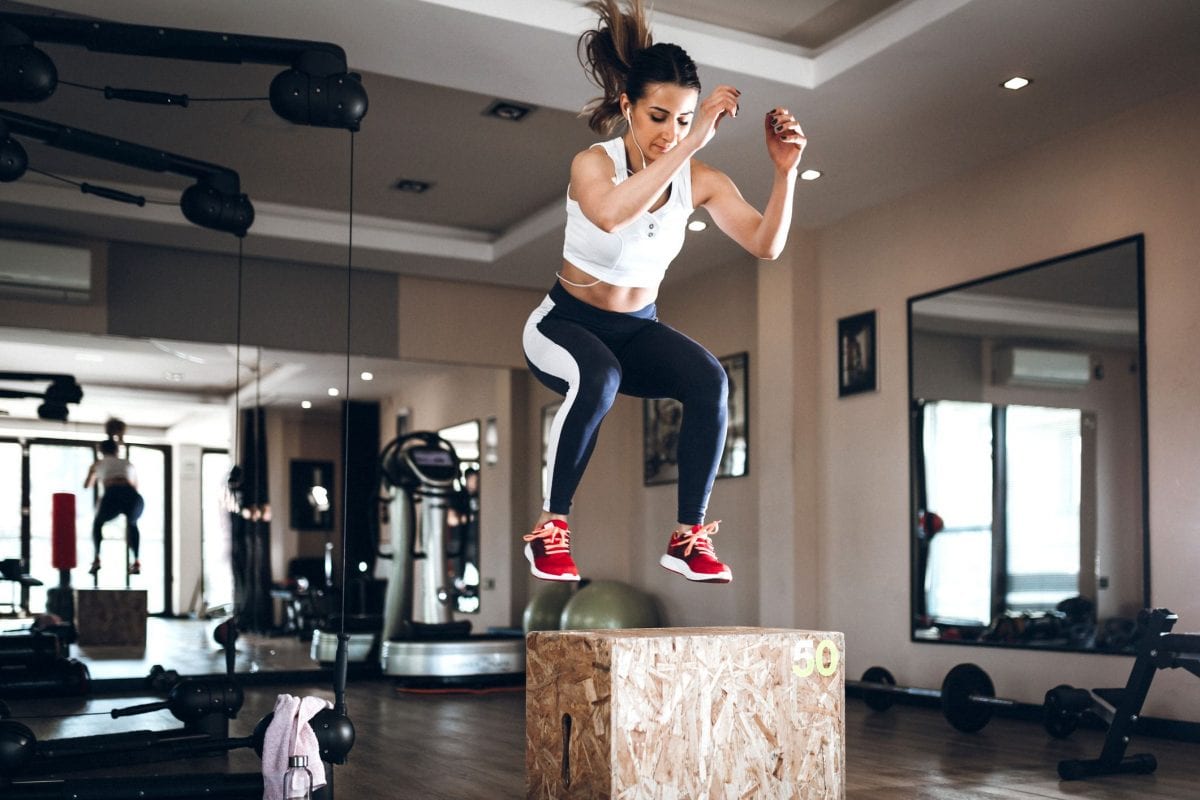We all focus on muscle growth that sometimes we forget that endurance is just as important to keep going longer and harder as it is for strength training. Here are some exercises that you can incorporate into your next workout regimen to help build endurance:
1) Jump Training / Plyometrics
Cardio is good, but plyometrics is even better. Jump training is especially useful because your muscles exert maximum force over a short interval, which conditions your body to burn a lot more calories in the same amount of time compared to traditional cardio. But, since plyometrics is a high-impact and high-intensity workout, it’s essential to have the appropriate jump training shoes for jumping ropes and boxes, so you don’t hurt your feet or knees.
It is also important to mix it up with other low-impact forms of cardio like cycling, so you don’t tire yourself out quickly. Before performing rope or box jumps, be sure to do a quick warmup to avoid cramps. Plyometrics can be a great way also to lose weight and strengthen your core and lower body.
2) Obstacle Races / Tough Mudder
Anyone who’s taken part in the tough mudder challenge will attest to its grueling intensity. This is one of those challenges that will test not only your physical ability but also your mental strength and determination. Tough mudder is a 10-mile long endurance event that takes place throughout the world.
You will find yourself battling freezing cold water, trudging through mud and climbing over obstacles. It’s not unheard of to lose upwards of 1000 calories an hour in the tough mudder challenge. If you decide to take part in one, remember to wear the proper gear since you don’t want your running shoes drenched in mud and sludge. You can find specialized tough mudder gear online, but for the most part, you’d need moisture-wicking clothing, sunglasses, and a cap/hat since you may be outside for up to 3-4 hours in the course of the challenge.
Most tough mudders (that’s what they’re called) will train for 4-5 months before the event to prepare adequately. On the day of the challenge, you should follow a marathon runner’s diet and avoid any heavy carbs, or you could find yourself throwing up on the sidelines. It’s best to consume simple carbs like oatmeal and bagels to get the optimum release of energy.
3) Resistance Training
Resistance training is some of the most accessible workouts you can perform either at home or in the gym. Common examples of resistance training include push-ups, pull-ups, sit-ups, etc. While you don’t need any extra equipment other than your body weight to do resistance workouts, it’s often better to use added weights or sandbags to give your body more of a challenge and build endurance. Resistance training is also the primary mode of exercise for trainees in the US Army, and look at how it’s working out for those boys!
It’s relatively cheap to buy a bunch of weights and do some resistance exercises at home. There are more specialized resistance training workout programs available online, so you never have to do the same kind of activity over and over again.
4) Long-Distance Running/Jogging
Long-distance running or jogging is different from sprinting that involves short distances and high speeds. While jogging long miles, the intensity might not be a lot, but any runner can tell you the benefits it has to build endurance – especially cold-weather running. It is this kind of grit that will help you run your first 5K or even a marathon. Any form of running will have an impact on your joints over a long period, but you can mitigate these effects by wearing good running shoes and proper conditioning before and after a run.
Running is also one of the most natural workouts to get into, but also the hardest to master. If you’re just a beginner, join a running group so you can workout together, and motivate each other. Moreover, earphones are essential (at least in my opinion) if you’re looking to make your experience more enjoyable.
5) Swimming
Swimming is one of the best all-round exercises. Not only is it relaxing and helps soothe your tired and aching muscles, but you can also build endurance by varying your intensity and stroke. An hour of freestyle swimming consumes about 800 calories and is also an excellent cooldown workout after an intense session at the gym. Swimming is also a low-impact exercise that is safe for your knees and joints, unlike running that can cause fatigue and aches down the line as you age.
Swim gear is exceptionally cheap, and you don’t require any specialized equipment other than a swim-cap, goggle, and earplugs. It’s best to mix swimming with high-impact exercises like running or plyometrics for a total body workout.









1 Comment
Comments are closed.